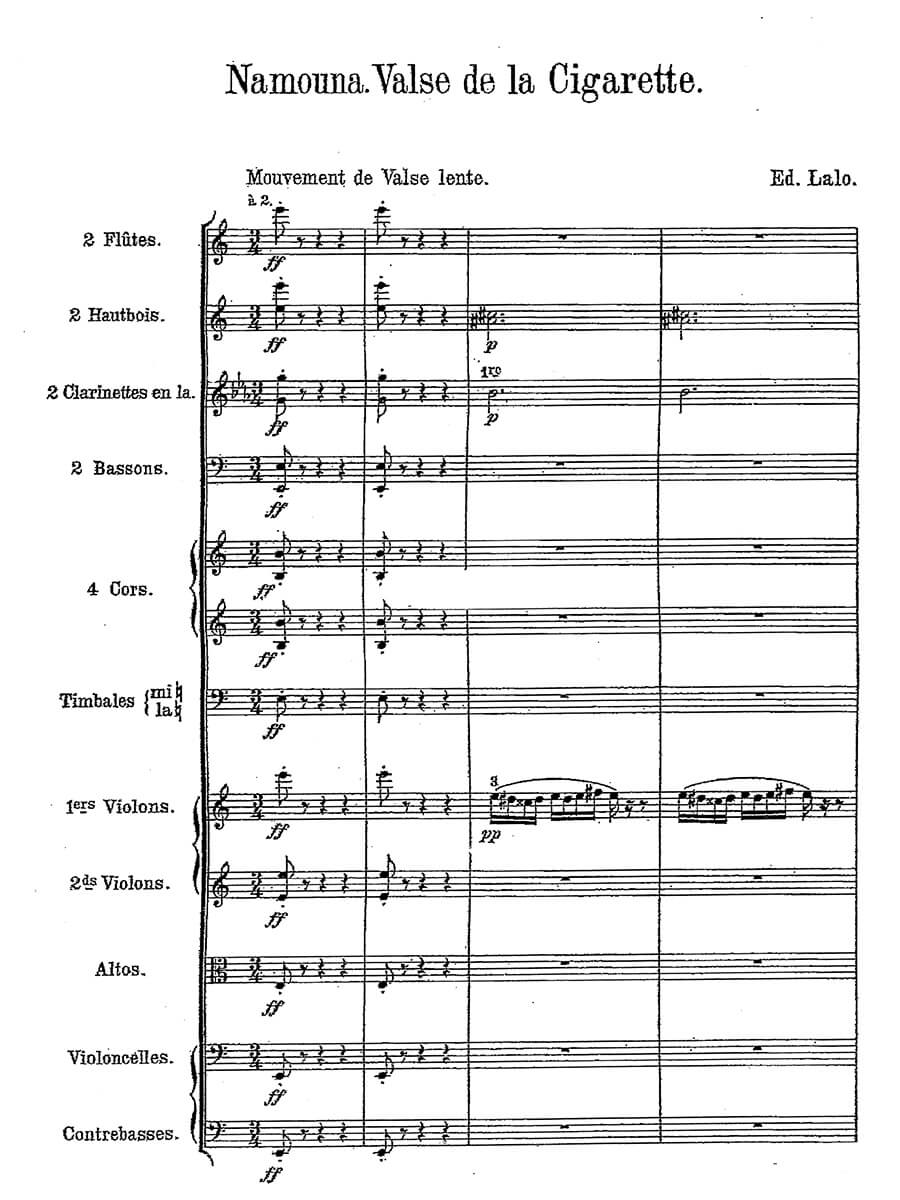Valse de la cigarette from the ballet ‘Namouna’
Lalo, Edouard
19,00 €
Preface
Édouard Lalo – «Valse de la cigarette»
(b. Lille, 27 January 1823 – d. Paris, 22 April 1892)
from the ballet «Namouna» (1881-82)
Édouard Lalo, who came from Spanish ancestors, was always somewhat overshadowed in his native France by Charles Gounod, César Franck, Camille Saint-Saëns, Georges Bizet, Jules Massenet and Gabriel Fauré. Like Max Bruch, his music has only really entered the international repertoire with two concertante works: the five-movement Symphonie espagnole op. 21 (his second violin concerto) from 1874 and the Cello Concerto in D minor from 1877. The fact that the French paid him so little attention was probably also due to his profound admiration for the great German masters Beethoven, Schubert, Mendelssohn and Schumann, who were timeless role models for him, and in connection with the fact that as a composer he did not favor a distinctly national attitude. For non-French composers, however, his music probably sounds no less French than that of Gounod, Saint-Saëns, Bizet or Massenet. Immediately after its premiere, it was Claude Debussy who discovered the exquisite finesse of Lalo’s ’Namouna’ ballet music (1881-82) and wrote enthusiastically about it.
Lalo is primarily known for his concertante works, less so for his other orchestral music or for his operas ‘Fiesque’ (1866-68), ‘Le Roi d’Ys’ (1875-87, his outstanding stage success) and ‘La Jacquerie’ (1889, unfinished). What is still surprisingly little recognized is his excellent chamber music, among which the three piano trios (the first two composed before 1850, the third in A minor op. 26 from 1880) are most frequently performed. But who knows his numerous works for violin and piano composed up to 1850, or ‘Guitare’ op. 28 from around 1877? Or the works for cello and piano, among which the Cello Sonata of 1856 stands out? His only string quartet in E flat major has also remained an insider tip. Published in 1859 as opus 19, he later revised it fundamentally and gave it the opus number 45 in 1880. …
read more / weiterlesen … > HERE
Score Data
| Score Number | 4891 |
|---|---|
| Edition | Repertoire Explorer |
| Genre | Orchestra |
| Pages | 48 |
| Size | 210 x 297 mm |
| Printing | Reprint |
